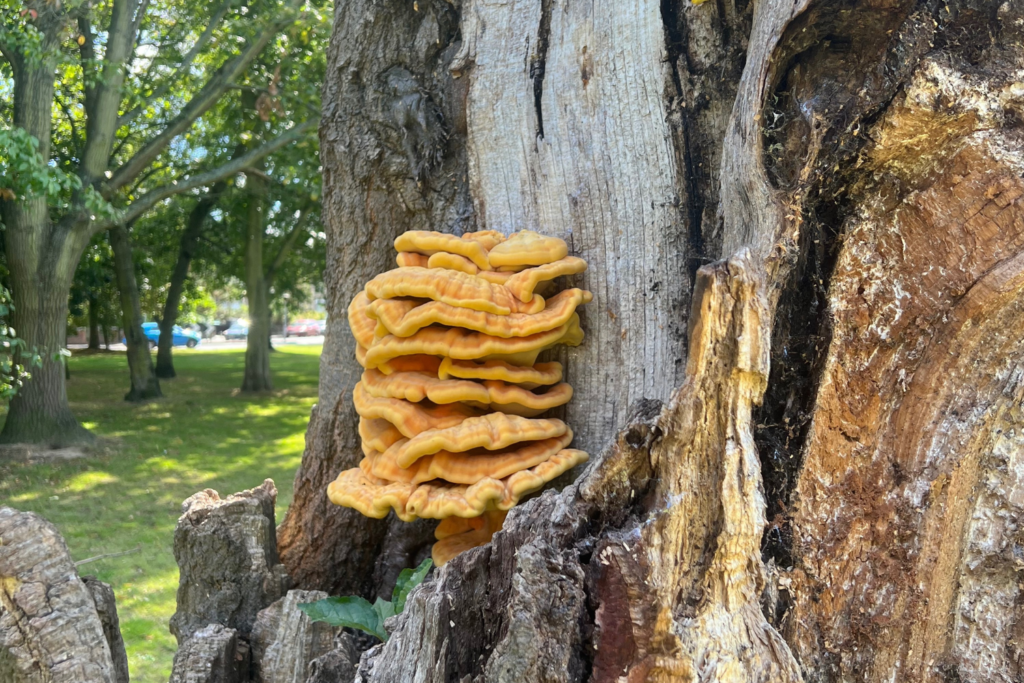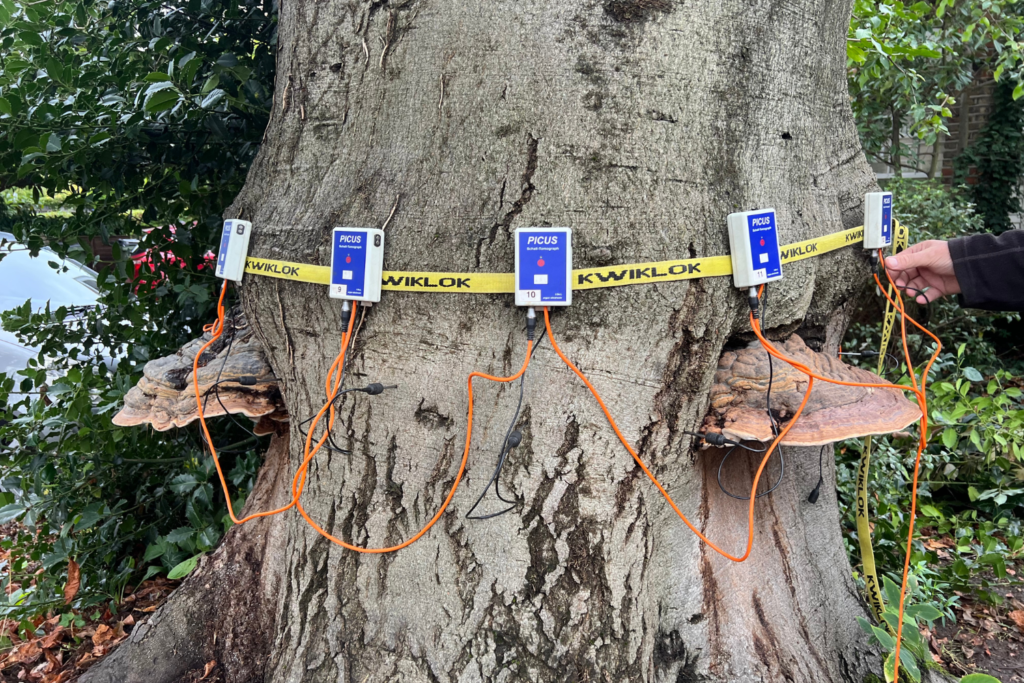How Decay Detection Equipment Saves Trees and lowers Risks Of Tree Failure
Tree decay detection equipment plays a critical role in arboriculture, helping professionals assess the internal structural condition of trees without causing harm. This technology has become increasingly important for urban tree management, conservation, and public safety.
In this article, we’ll explore what tree decay detection equipment is, how it works, the different types available, and its benefits in modern tree care.

Understanding Tree Decay
Tree decay is a natural process in which the wood of a tree deteriorates due to fungal or bacterial activity. This process compromises the structural integrity of the tree, increasing the risk of limb failure or complete collapse.
Causes of Tree Decay
- Fungal infections
- Mechanical damage (e.g. pruning wounds)
- Insect infestations
- Environmental stressors like drought or flooding
While some decay is inevitable, undetected internal rot can pose risks to nearby people, property, and infrastructure.
Why Detecting Tree Decay Matters
Early detection of internal decay allows arborists to take preventative action. This may include pruning, bracing, treatment, or in severe cases, tree removal. By using tree decay detection equipment, tree professionals can make informed decisions based on the internal condition of a tree rather than just external appearance.
What Is Tree Decay Detection Equipment?
Tree decay detection equipment refers to a range of tools and technologies designed to detect internal defects, cavities, and rot inside a tree. These tools allow arborists to investigate what’s happening beneath the bark without the need for invasive cutting or drilling.
Non-Destructive Tree Assessment
The key advantage of using such equipment is its non-destructive nature. It preserves the tree while offering valuable data for analysis and diagnosis. These tools are essential for inspecting heritage trees, trees in conservation areas, and those in high-risk public spaces like parks, schools, and roadsides.
After Extreme Weather Events
Storms, high winds, and heavy snowfall can cause severe tree damage. Post-weather inspections help prevent accidents caused by falling branches or weakened trees.
Types of Tree Decay Detection Equipment
Various technologies have been developed to detect decay within trees. Each method offers different insights, and often, arborists use a combination of these tools to gain a comprehensive understanding.
Resistograph
A resistograph drill is a mechanical device that measures the resistance encountered by a fine drill as it moves through the wood. The resistance data is recorded on a graph, helping arborists identify areas of low density which may indicate decay or voids.
Advantages of Resistographs
- Accurate density mapping
- Minimal invasion (small drill hole)
- Quick and reliable results
Sonic Tomography
Sonic tomography for trees uses sound waves to detect decay. A series of sensors are placed around the trunk, and a mallet is used to send sound waves through the wood. By measuring the speed and pathway of these waves, the device generates a visual map of internal conditions.
Key Features
- Non-invasive
- Provides cross-sectional image
- Excellent for hollow or large trees
Electrical Resistance Tomography (ERT)
ERT works by measuring how electrical currents pass through the tree. Decayed wood, being drier and more porous, resists electricity differently than healthy wood. This method helps identify internal rot and moisture distribution.
Benefits of ERT
- Non-destructive
- Effective in detecting early decay
- Identifies moisture movement within the tree
Thermal Imaging
Thermal cameras detect surface temperature variations on the bark of the tree. Internal decay can affect the way heat is distributed through the tree, which can sometimes be visualised with this method.
Considerations
- Works best in specific environmental conditions
- May not detect deep internal defects
Urban Tree Management
Local councils and landowners use decay detection tools to assess the health of urban trees. These trees are often under stress and located in high-traffic areas, making safety assessments crucial.
Heritage and Veteran Trees
Ancient and veteran trees are vital for biodiversity and heritage. Decay detection helps manage these trees sympathetically and safely preserving there future within our London landscape while ensuring public safety.
Pre-Development Surveys
Tree assessments are often required before construction begins. Detection equipment ensures that trees on site are safe and healthy, or identifies those that may pose a risk in the future.
Routine Arboricultural Surveys
Arborists use decay detection equipment as part of their regular inspection services. This helps identify hidden defects that could lead to branch or tree failure.
Benefits of Using Tree Decay Detection Equipment
Improved Safety
By identifying decay early, arborists can mitigate potential hazards. This reduces the risk of falling limbs or tree failure, particularly in areas with high pedestrian or vehicle traffic.
Enhanced Tree Care
Detection tools provide data-driven insights that improve tree management decisions. Rather than relying solely on visual inspections, arborists can create targeted care plans that extend a tree’s life.
Cost Efficiency
Preventing tree failure avoids costly damage to property or infrastructure. It also reduces the need for emergency tree removal or reactive maintenance.
Environmental and Aesthetic Value
By preserving healthy trees and maintaining the urban canopy, detection equipment supports environmental sustainability and enhances local beauty.
Tree Safety Reports Are Only for Large Properties
Tree risk assessments benefit private gardens, residential areas, and commercial properties like schools and business alike.
Choosing the Right Equipment
The selection of tree decay detection tools depends on the tree species, location, size, and suspected issue. A qualified arborist will often determine the most suitable method or combination of methods.
Some tools offer more immediate results, while others provide highly detailed data for in-depth analysis. It’s important to balance accuracy, invasiveness, and budget when choosing equipment for a specific project.

The Future of Tree Health Assessment
Tree decay detection equipment has revolutionised the way arborists care for trees. These advanced tools allow for non-invasive, accurate diagnosis of internal decay, helping to ensure public safety, extend tree life, and support sustainable urban development.
As technology continues to evolve, detection methods will become even more precise and accessible. Investing in tree decay detection is not only a smart strategy for arborists but a necessary step in preserving the health and safety of our urban and natural landscapes.
By hiring a qualified tree consultant , tree risks can be identified early, allowing for proper tree management decisions to allow for tree preservation. Investing in early tree decay detection is a practical and responsible decision for maintaining green spaces.
Call 07709 051535 or Email info@londontreesurveyconsultants.co.uk to Book Your Tree Survey Today






